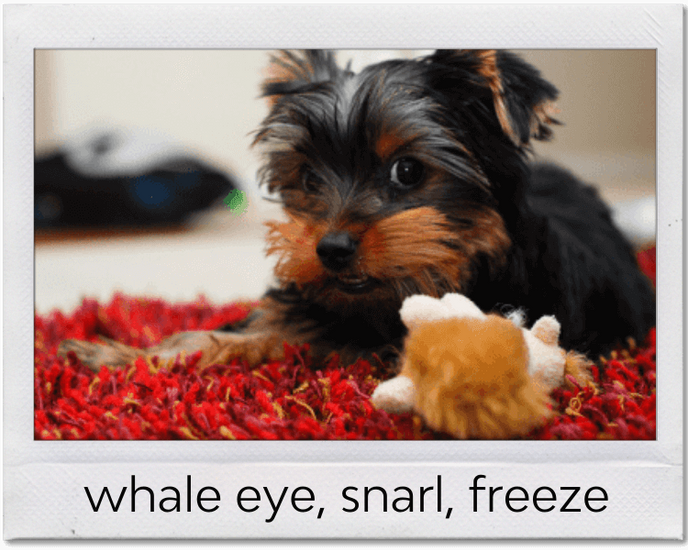
Resource guarding is a natural behavior in dogs, but not every dog guards. If you have one that does, or you're not sure if it's guarding, let's review some resource guarding basics.
Resource guarding happens when a dog feels the need to protect something they value, like food, toys, or even a favorite spot or person. While it’s normal for dogs to want to hold onto things they like, it can become an issue if they growl, snap, or bite to keep others away.
With patience, understanding, and positive reinforcement, you can help your dog feel safer and more comfortable with others near their treasures.
Why Do Dogs Guard Resources?
Dogs may guard resources for several reasons. Some common ones include:
Insecurity: A dog who isn’t sure when they’ll get their next meal or toy might guard what they have.
Fear: They might worry that someone will take their valuable item away.
Learned Behavior: If resource guarding worked in the past to keep others away, they might continue doing it.
It’s important to remember that resource guarding isn’t about dominance—it’s about feeling safe and secure.
Signs of Resource Guarding
Recognizing the signs of resource guarding is the first step to addressing it. These signs can include:
Growling or snarling when someone approaches their item.
Stiffening their body or freezing near the guarded item.
Snapping or biting if someone tries to take the item.
Not all guarding looks the same, so pay attention to your dog’s body language.
How to Handle Resource Guarding
If your dog is showing signs of resource guarding, here are some tips to help them feel more secure:
Manage the Environment: Start by preventing situations where guarding might occur. Feed your dog in a quiet space where they feel safe, and supervise playtime with toys.
Avoid Punishment: Never punish your dog for guarding. This can make them more fearful and escalate the behavior. Instead, focus on building trust.
Don’t Take: Teach your dog that your approach is rewarding. Offer them something better, like a tasty treat by tossing it over to them if they are with a guarded item that you need. Turn it to a game by tossing one treat to them and then one away from them so they leave the guarded item behind. We recommend getting the dog outside or into another room by playing a treat toss or find it game before you remove the guarded item.
Practice “Drop It” and “Leave It”: Teaching these cues can help your dog feel safe letting go of items. Use positive reinforcement by rewarding them every time they follow the cue.
Feed Separately: If your dog guards their food, feed them in a quiet space away from other pets or distractions. This reduces stress and prevents conflicts.
Seek Professional Help: If your dog’s guarding behavior feels unsafe or challenging to manage, consult a professional dog behavior consultant. They can create a customized plan to address the issue in a safe, humane way.
General Tips for Responding to Resource Guarding:
Always prioritize safety. Avoid putting yourself or others in harm’s way.
Be patient and move at your dog’s pace. Progress may take time, but consistency is key.
Remember to reward calm, cooperative behavior every step of the way.
If your dog’s resource guarding escalates or becomes dangerous, seek help from a certified professional. They can guide you through tailored strategies to address the behavior effectively.
A Final Note
Resource guarding doesn’t mean your dog is “bad” or “mean”—it’s just their way of saying they need help feeling secure. By understanding their behavior and using positive, force-free techniques, you can help them relax and enjoy their treasures without worry.
Remember, patience and kindness go a long way in strengthening the bond you share with your dog. Every small step you take toward understanding and addressing resource guarding is a step toward a happier, more confident pup!












